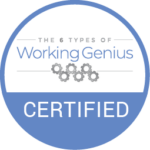For most of my career, I have been involved in project management in the non-profit sector. The projects I’ve been responsible for have included short-term and multi-year efforts, community-based and nationally focused initiatives, flexible and prescriptive implementation, and budgets ranging from a few thousand dollars to nearly $1 million. Early on in my career, I figured out how to get a project off the ground quickly and ensure deliverables were completed on time and were high quality. I’ve developed my own budget tracking system, work plans, communications plan, and reporting templates. And yes, I often made things up as I went along. Over the last 20 years, I have refined my systems, made improvements based on lessons learned, and adapted my project management system based on the scope of work. When I was asked to share my approach to project management, I realized that no matter the project, I relied on a core set of elements.
When organizations are awarded funding to embark on a new project, emotions can run from excitement to “oh gosh, now what do we do?” There are many components to successful project management, but arguably project startup is the most critical. Project startup sets the project on the trajectory for success. During start-up, you establish the infrastructure, operations, and processes that set the tone for the life of the project. Here are tips for getting a project up and running based on what has worked for me and my colleagues at INCITE Consulting Solutions.
- Take time for strategic planning. Yes, it’s important to ensure the deliverables are met but your project does not operate in a silo. Think about how the project affects the organization as a whole. Is this a time-limited initiative or will this project contribute to long-lasting systemic changes? Can this project be leveraged for other initiatives and/or funding? Try to have these conversations before your project gets underway; understanding the big picture will impact your approach.
- Think about your staffing needs. As leaders with competing priorities, it is unrealistic to stay on top of the day-to-day operations of the project. Think about the skill set needed to execute the project. If hiring new staff, is the hiring and orientation plan in place? If transitioning staff, have you thought through the reallocation of the staff’s existing responsibilities? Establish an interim plan that addresses the project’s immediate needs while hiring or transitioning staff. This can include utilizing outside consultants who assist with startup activities or serve as temporary staff extenders.
- Develop your communications plan. Don’t underestimate the value of communication. The communications plan should include strategies for leadership to communicate with the entire organization about how the project fits into the organization’s overall vision and mission. This is important for buy-in, especially if the expectation is that the project will impact the organization as a whole. The plan should also include strategies for the project team to regularly communicate progress with one another, as well as the organization to share key messages with various stakeholders.
- Take advantage of project management tools. When I first started out, I used good old-fashioned Excel to develop my work plan/project tracker (and still do from time to time). But there are many online options to choose from nowadays. Don’t be afraid to test drive several tools before settling on the one that works best for your team. I like using Asana with clients. In general, you’ll want a tool that can document the key tasks, timeframe, responsible party, needed resources, and outcome indicators. I find it motivating to also have a way to document percent complete for each task (for an Excel-based Workplan, I color code my percent complete with red, yellow, and green). I share additional tools I use below.
- Don’t forget evaluation and quality control. It’s not enough that you’re meeting the deliverables; you want to make sure they are met on time, with high quality and efficiency. Identify quantitative and qualitative metrics, how they will be tracked, and how often. I am a big fan of Plan-Do-Study-Act to assess the effectiveness of processes. It may be helpful to recruit external evaluators and/or quality monitors, as they can provide a fresh perspective.
- Develop a risk management plan. Even the best-laid plans can be derailed through no fault of your own. Create a list of potential project risks and challenges and develop a plan to both monitor the risks and mitigate or prevent them. For example, make sure processes are documented so that if staff unexpectedly leaves, they leave their knowledge behind. Having a risk management plan also demonstrates to funders and stakeholders your ability to adapt to different circumstances.
Project Management Tools
Some of the tools I use when getting ready to launch a project include:
- Project charter. Based on Lean Six Sigma, the Project Charter is a living document that outlines the project for key staff and stakeholders. It not only clarifies the scope of the project but just as importantly, what is outside of the scope. This is great for managing expectations upfront and setting reasonable boundaries.
- Responsible, Accountable, Consulted, and Informed (RACI) Matrix. The RACI matrix brings clarity and structure to describe the roles and responsibilities of each team member.
- Logic model. A logic model is a visual roadmap of your program’s activities and intended outcomes. The University of Wisconsin – Extension has a popular resource on logic models. This could also serve as a useful one-pager to share with stakeholders.
Want to discuss current challenges with getting one of your projects up and running? Email me at Emmas@inciteconsultingsolutions.com to schedule a time to explore ideas to help your organization.




